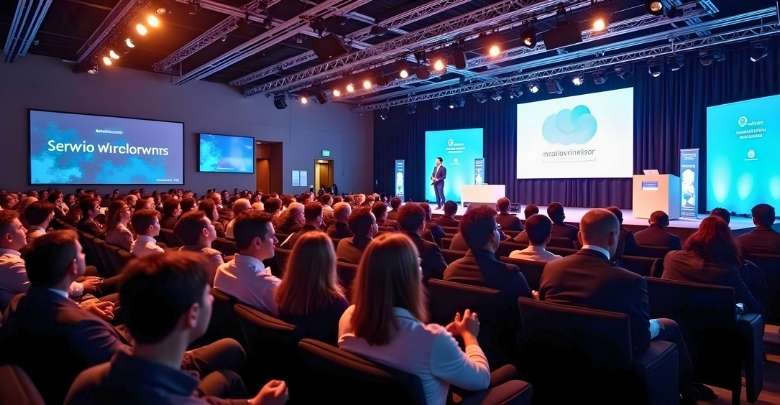Planning to attend a conference in Canada? Conferences in this vibrant and diverse country offer a wealth of opportunities for networking, learning, and professional growth. However, understanding the typical duration of conferences can help you better plan your schedule and travel arrangements. So, what is the duration of conferences in Canada?
In Canada, conferences typically last anywhere from one day to a full week, depending on their goals and audience. Single-day events are often focused and concise, while multi-day or week-long conferences allow for in-depth discussions, networking, and a broader range of sessions. Virtual conferences, on the other hand, tend to be shorter to accommodate remote participants.
Are you curious to learn more about how long conferences in Canada usually last? This article explores everything you need to know, from the factors that influence duration to how it impacts your experience and planning.
Why Does Duration Matter in Canadian Conferences?
The duration of a conference significantly impacts its structure, activities, and overall effectiveness. A well-planned time frame ensures that attendees can engage with keynote sessions, workshops, and networking opportunities without feeling overwhelmed. Balancing time is key to creating a meaningful experience.
Canadian conferences vary in duration, often spanning one to three days depending on the industry and event goals. Multi-day conferences typically allow for in-depth discussions and broader content coverage. Meanwhile, shorter conferences focus on concise and impactful sessions to focus on busy professionals.
The conference culture in Canada emphasizes inclusivity, engagement, and thoughtful scheduling. Whether it’s a one-day seminar or a week-long gathering, a conference in Canada aims to provide value to every participant. This focus on quality ensures a productive and enriching experience for all attendees.
What Is the Duration of Conferences in Canada?
Conferences in Canada vary widely in duration, reflecting the diversity of industries, themes, and objectives they serve. From single-day events to week-long gatherings, the length of a conference is carefully planned to maximize value for attendees and organizers. Here’s an overview of conference durations in Canada:
One-Day Conferences
One-day conferences are designed for professionals seeking quick yet impactful learning experiences. These events often focus on a specific theme or topic, featuring keynote speeches, panel discussions, and networking opportunities. Attendees can gain valuable insights without taking extended time away from work. This format is popular for local industry events and specialized seminars.
Multi-Day Conferences
Multi-day conferences, typically lasting two to three days, are the most common format in Canada. They provide a more in-depth exploration of topics, allowing time for workshops, breakout sessions, and networking mixers. Multi-day events are ideal for large-scale gatherings like trade shows or industry conventions. This format gives attendees the chance to build deeper connections and fully immerse themselves in the event.
Week-Long Conferences
Week-long conferences are less common but are often reserved for major international events or academic gatherings. These events include a mix of educational sessions, cultural activities, and leisure opportunities. Attendees often have the flexibility to attend sessions of their choice over several days. This format allows for a multifaceted experience and attracts participants from around the world.
Virtual Conference Durations
Virtual conferences in Canada tend to have shorter durations compared to in-person events. These online gatherings may last a few hours or span a couple of days, with breaks in between to reduce screen fatigue. The flexibility of virtual formats enables organizers to serve global audiences. Despite being shorter, virtual conferences offer a rich variety of content and engagement options.
Factors That Influence the Duration of Canadian Conferences
The duration of Canadian conferences is determined by several factors that ensure the event aligns with its goals and meets attendee expectations. These elements define the schedule and structure of conferences, creating a balanced experience for participants. Below are the factors that influence the duration of a conference:
- Type of Conference: The purpose of the event heavily influences its length. Specialized workshops may last a day, while large-scale conventions or trade shows can extend over several days to cover diverse topics.
- Industry Standards: Different industries have norms for conference duration. Academic conferences, for example, often span multiple days for detailed research presentations, while tech or marketing events may focus on shorter, high-impact sessions.
- Target Audience: The availability and preferences of the attendees also play a role. Professionals with limited time may prefer single-day events, while broader audiences may appreciate multi-day gatherings for deeper engagement.
- Content and Activities: The range of sessions, workshops, and networking opportunities affects the schedule. More extensive programs require additional time to ensure attendees can participate fully and gain maximum value.
- Event Location and Format: Conferences held in major cities or as virtual events may have shorter durations to ensure convenience. In contrast, destination conferences may last longer, incorporating leisure activities alongside formal sessions.
How to Plan Your Schedule Based on Conference Duration in Canada?
If you want to make the most of your time in Canada, you need to carefully plan your schedule around the conference. Whether it’s a one-day seminar or a multi-day event, an effective schedule ensures you gain maximum value and balance learning with networking. Here’s how to organize your time:
Know the Conference Format and Agenda
Review the conference agenda to understand its format, including keynotes, workshops, and networking opportunities. Take note of any must-attend sessions or activities relevant to your professional goals. For example, if the event covers popular conference topics in Canada like sustainability or technology, identify sessions that align with your interests. Familiarity with the agenda allows you to allocate your time effectively.
Prioritize Sessions and Activities
Not all sessions hold equal importance, so prioritize based on your objectives. Focus on attending keynotes and workshops that offer actionable insights or new perspectives. Allocate time for networking opportunities, such as mixers or breaks, to build valuable connections. Prioritizing helps you avoid feeling overwhelmed and ensures you participate in the most impactful aspects of the event.
Incorporate Time for Breaks and Reflection
Long conferences can be mentally and physically draining, so schedule breaks to recharge. Use downtime to reflect on the information you’ve gathered and plan how to apply it professionally. This balance between learning and rest helps maintain energy levels and ensures you stay engaged throughout the event. Incorporating reflection time can also deepen your knowledge of key takeaways.
Plan for Travel and Logistics
If the conference is held in a different city, factor in travel time, accommodations, and transportation. Arrive early to familiarize yourself with the venue and settle in before the event starts. For multi-day conferences, prepare for possible delays or changes to the schedule. A well-organized travel plan ensures you’re present and ready to participate fully.
Use Technology to Stay Organized
Many Canadian conferences provide apps or digital tools to help attendees manage schedules and connect with others. Use these tools to keep track of sessions, set reminders, and engage with fellow participants. Digital platforms can improve your conference experience by streamlining communication and helping you make the most of your time.
With a well-thought-out plan, you can maximize the value of any Canadian conference, no matter its duration. By prioritizing, balancing activities, and using available tools, you’ll create a productive and enjoyable experience customized to your professional goals.
How Duration Impacts the Experience at Canadian Conferences?
The duration of a conference plays a key role in shaping the attendee experience. It determines how much content can be covered, the depth of discussions, and the level of networking opportunities available. Here’s how duration impacts various aspects of Canadian conferences:
Content Coverage and Depth
Longer conferences allow for a broader range of topics to be explored in detail. Attendees can benefit from diverse sessions, workshops, and panels that go deeper into specific themes. However, shorter conferences often focus on concise, high-impact presentations that prioritize key insights. The choice between these formats affects how much attendees can learn and apply.
Networking Opportunities
A multi-day conference provides more time for building meaningful connections with peers and industry leaders. Extended durations create multiple opportunities to network through mixers, informal discussions, and structured sessions. In contrast, single-day events often limit networking to brief interactions during breaks or after sessions. Duration influences the quality and quantity of connections attendees can make.
Engagement and Energy Levels
Longer conferences require careful pacing to keep attendees engaged without overwhelming them. Organizers often include breaks and leisure activities to ensure participants remain focused and energized. Shorter conferences, while intense, are easier to maneuver and demand less time commitment. The duration impacts how well attendees can absorb information and maintain their focus.
Flexibility and Accessibility
The length of a conference can affect its accessibility for different types of attendees. Busy professionals may prefer shorter events that fit into their schedules, while those seeking comprehensive experiences might opt for multi-day events. Duration also influences travel and accommodation planning, making flexibility an important consideration for attendees.
The duration of Canadian conferences has a direct impact on the attendee experience, influencing learning, networking, and overall engagement. Whether long or short, each format has its own strengths, allowing participants to choose events that best match their needs and goals.
Does Duration Matter in Finding Sponsorship?
The length of a conference directly affects the value and visibility that sponsors gain. Sponsors carefully analyze how the event length aligns with their goals to determine the potential return on investment. Here’s how duration impacts sponsorship opportunities:
Longer Durations Provide Extended Visibility
A multi-day conference allows sponsors to enjoy prolonged exposure to attendees. This extended time frame provides more opportunities to engage with the audience through branding, exhibits, or presentations. Sponsors also benefit from repeated impressions over several days, which can strengthen brand recall. Longer durations create a more immersive experience for both attendees and sponsors.
Shorter Conferences Offer Focused Engagement
Single-day conferences are attractive to sponsors looking for high-impact, time-efficient opportunities. These events often concentrate on a specific audience or theme, ensuring targeted exposure for sponsors. The condensed schedule means every sponsorship activity is impactful and visible to attendees. This focused approach is ideal for sponsors with niche objectives.
Duration Influences Sponsorship Packages
The length of the event determines the variety and scope of sponsorship packages available. Multi-day conferences may offer options like session sponsorships, branded breaks, or evening mixers. In contrast, shorter events focus on concise opportunities such as keynote sponsorships or logo placements. When companies find sponsorship opportunities for Canadian conferences, they often review these customized packages to ensure alignment with their marketing strategies.
Sponsor Expectations and ROI
Sponsors consider how the duration aligns with their expected outcomes. For instance, companies that aim to engage deeply with attendees may prefer longer events for extended interaction opportunities. Conversely, short events appeal to sponsors seeking quick and impactful visibility. Matching sponsor goals with the event’s duration is key to building successful partnerships.
The duration of a conference is a significant factor in securing sponsorships, influencing visibility, engagement, and the range of sponsorship packages. By aligning event length with sponsor goals, organizers can create mutually beneficial opportunities that increase the value of the partnership. Whether long or short, the key is to match sponsor expectations with the event’s format.
Frequently Asked Questions (FAQs)
The duration of conferences in Canada varies based on factors like industry, format, and event goals. Attendees and organizers can prepare for these differences when they understand them. Below are common questions about Canadian conference durations and their impact.
Are Canadian Conferences Usually Longer for Certain Industries?
Yes, industries like academia and healthcare often host multi-day conferences to accommodate detailed presentations and collaborative sessions. In contrast, sectors like technology and marketing may opt for shorter, high-impact events custom-made to professionals with busy schedules.
How Does Conference Duration Affect the Number of Sessions?
The length of a conference determines how many sessions can be included. Multi-day events typically offer a variety of workshops, keynotes, and panels, while shorter conferences focus on fewer but more impactful sessions to provide a streamlined experience for attendees.
Do Virtual Conferences in Canada Have Different Durations?
Virtual conferences in Canada are generally shorter than in-person events, often lasting a few hours or spread over two days. Organizers design virtual events to reduce screen fatigue while ensuring participants can engage in key sessions and networking opportunities.
How Can I Plan for a Week-Long Conference in Canada?
Planning for a week-long conference involves reviewing the agenda in advance, prioritizing key sessions, and incorporating breaks to recharge. Scheduling time for leisure or cultural activities, which are often part of longer conferences, ensures a balanced and productive experience.
What Is the Ideal Duration for Networking at a Conference?
Multi-day conferences are ideal for networking, as they offer repeated opportunities to engage with peers and industry leaders. However, single-day events with dedicated networking sessions can also provide impactful opportunities to connect, especially when attendees come prepared with clear objectives.
Final Thought
The duration of conferences in Canada varies, typically ranging from single-day events to multi-day or week-long gatherings, depending on the industry and event goals. Whether short or long, each format is carefully designed to maximize value for participants. If you’ve been asking: What is the duration of conferences in Canada? The answer depends on the type and focus of the event.
To make the most of any conference, plan ahead by reviewing the agenda, prioritizing key sessions, and balancing learning with networking. Consider your schedule and preferences when selecting events. Wishing you success in finding and attending Canadian conferences that fit your goals perfectly!








